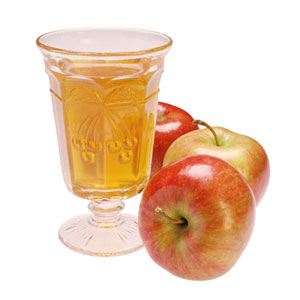
A family of steroids related to the male sex hormone TESTOSTERONE. These are classified as prescription drugs used to make up for hormone imbalance and deficiencies. However, synthetic analogs of testosterone have been obtained illegally by athletes and by teenage males to build muscles, and the U.S. FDA has described steroid abuse as a drug epidemic. While testosterone stimulates growth during adolescence, the synthetic derivatives can cause many side effects. Athletes compound this unsafe practice by “stacking” anabolic steroids—taking a combination of brands at 10 to 100 times the recommended doses for weeks at a time.
In men, the side effects of anabolic steroid use include lowered sperm count, enlarged prostate gland, shrinking testicles, balding, and enlarged breasts. If taken before puberty, anabolic steroids can stunt growth. These effects seem to be reversible if anabolic steroids have been used for a short time. Some women body builders also use steroids to build muscle. Side effects in women do not seem to be reversible: masculinization, including increased muscles, increased size of clitoris, growth of facial hair, a deepening voice, shrinkage of breast size, uterine atrophy, and menstrual irregularities. Severe cases of acne and bouts of rage are signs of anabolic steroid use, especially in males. Anabolic steroid use can have more subtle, longterm detrimental effects; damage may show up years later as a HEART ATTACK, high blood pressure, CANCER, and LIVER damage in both men and women.

 A genus of MUSHROOM that includes many poisonous species, along with a few edible ones. Amanita species can be confused with edible mushrooms. The most common cause of mushroom poisoning is the ingestion of A. phalloides (death cap) and A. virosa (destroying angel). These species produce specific toxins called amatoxins and phallotoxins, compounds with cyclic AMINO ACID structures. A single mushroom may contain enough of these poisons to kill an adult. Eating the mushroom can cause LIVER, HEART, and KIDNEY damage, as well as symptoms of common shock and delirium.
A genus of MUSHROOM that includes many poisonous species, along with a few edible ones. Amanita species can be confused with edible mushrooms. The most common cause of mushroom poisoning is the ingestion of A. phalloides (death cap) and A. virosa (destroying angel). These species produce specific toxins called amatoxins and phallotoxins, compounds with cyclic AMINO ACID structures. A single mushroom may contain enough of these poisons to kill an adult. Eating the mushroom can cause LIVER, HEART, and KIDNEY damage, as well as symptoms of common shock and delirium.
 (Temik; Carbamyl) A very toxic insecticide widely used on POTATOES, SOYBEANS, PEANUTS, and citrus crops for control of chewing and sucking insects. Aldicarb was assumed to break down rapidly after application. However, tests show that it can persist in soil for years and contaminate crops planted in the same soil later. Several instances of aldicarb poisoning indicate the potential hazard of using this pesticide.
(Temik; Carbamyl) A very toxic insecticide widely used on POTATOES, SOYBEANS, PEANUTS, and citrus crops for control of chewing and sucking insects. Aldicarb was assumed to break down rapidly after application. However, tests show that it can persist in soil for years and contaminate crops planted in the same soil later. Several instances of aldicarb poisoning indicate the potential hazard of using this pesticide.
 ALCOHOL interacts with many medications. Drinking alcohol can alter the way the body metabolizes drugs. As an example, the LIVER adapts to alcohol consumption by increasing its battery of drug-destroying ENZYMES. Because a heavy drinker may metabolize a sedative rapidly, its effects could wear off sooner than in a non-drinker, leaving the heavy drinker undersedated. Patients should read prescription labels carefully before drinking, and inform dentists, physicians, pharmacists, and other health care providers if they drink.
ALCOHOL interacts with many medications. Drinking alcohol can alter the way the body metabolizes drugs. As an example, the LIVER adapts to alcohol consumption by increasing its battery of drug-destroying ENZYMES. Because a heavy drinker may metabolize a sedative rapidly, its effects could wear off sooner than in a non-drinker, leaving the heavy drinker undersedated. Patients should read prescription labels carefully before drinking, and inform dentists, physicians, pharmacists, and other health care providers if they drink.
 A chemical formerly used to improve the color, yield, and storage qualities of APPLES. It is not a PESTICIDE. Until the late 1980s, Alar was used on an estimated 5 percent to 10 percent of the American apple crop. It was also used on CHERRIES and PEANUTS. Alar is a systemic pollutant, meaning it is distributed throughout the plant and cannot be washed off. Because alar has caused CANCER in experimental animals, experts worried
A chemical formerly used to improve the color, yield, and storage qualities of APPLES. It is not a PESTICIDE. Until the late 1980s, Alar was used on an estimated 5 percent to 10 percent of the American apple crop. It was also used on CHERRIES and PEANUTS. Alar is a systemic pollutant, meaning it is distributed throughout the plant and cannot be washed off. Because alar has caused CANCER in experimental animals, experts worried